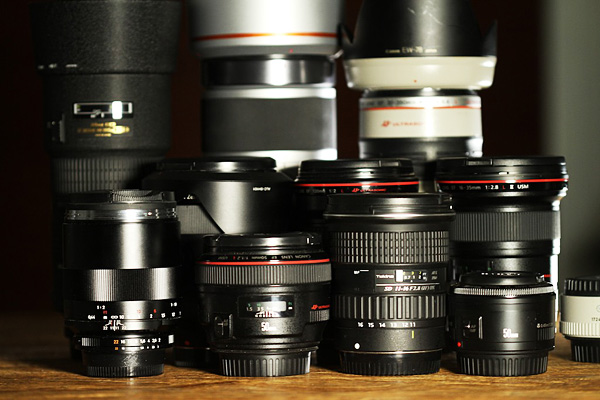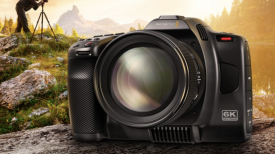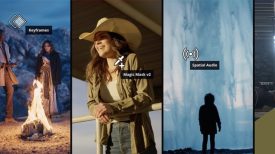By Matt Allard
Lenses should be the most important part of your kit. Camera bodies come and go, but good glass can be used for a lifetime. Testament to this is that 20- to 30-year-old lenses can still look fantastic on your camera. Over time they have been refined – auto focus and stabilization may have been added – but the basic design remains the same.
You should always try to buy the best lens you can afford. You are better off spending more money on your lens than getting an expensive camera body and a cheap kit lens. In most cases you get what you pay for, but there are always exceptions. If you only have enough money for a Canon 5DmkII body and a cheap lens, you are better off getting for example a Canon 60D and spending more money on a better piece of glass. You can keep quality lenses forever but your camera body can become outdated in a matter of years. Another very important thing to remember is try to buy a lens you can use on multiple cameras as this will save you a fortune down the track.
The first thing you need to consider is whether you are going to use the lenses for stills as well or just video. For photo and video you are going to want a lens that has autofocus. Manual focus for photography can be a major hassle, depending on what you’re shooting. Go and try to shoot some fast-moving action with a manual focus only lens and you will be tearing your hair out. You just can’t focus as fast as a good auto focus system.
But for video, manual focus is crucial. You can’t be in the middle of shooting something and have your lens whirling around trying to grab focus during a shot. Lenses by Canon/Nikon/Tamron/Sigma etc that have both manual and auto focus are your best option if you plan to shoot stills and video. A lot of modern day lenses also offer image stablizers (often referred to as IS or VR) which can make a big difference to your photos or video.
If you want lenses just for video then you need to consider other things. For example, if you buy a Canon EF lens for, say, your 7D you have no ability to change exposure smoothly during a shot as the aperture is controlled by a clicked dial on the rear of the camera. The other problem is that Canon EF lenses don’t work fully on anything other than a Canon body. There are adaptors from Birger and other companies that are coming out that will allow you to use EF glass with full aperture control for cameras like the Panasonic AF100, Sony FS100 and the Sony F3, but they will not be cheap. So for video your choices are a bit harder. You ideally want a lens that allows you to manually control the aperture and has manual focus. Even manual aperture lenses do have hard aperture stops but you can get them declicked to offer smooth iris control.
The second thing you have to decide is whether to get a prime lens or a zoom lens. There is no right or wrong choice here: it comes down to the individual operator and what he or she needs the lens for. Zooms can save you a lot of time as you don’t have to keep changing lenses, you don’t have to move around as much and you don’t need to buy as many lenses. When looking at a zoom lens you want to make sure you get something that has a constant aperture eg f2.8. If you have a zoom lens with variable aperture, the aperture will change when you change the focal length – this is a major pain for video. Additionally some zoom lenses (known as varifocal) do not maintain the focus throughout the zoom range meaning that you have to refocus every time you zoom – another major pain. In the ideal world your zoom lens would be fixed aperture and maintain focus (parfocal).
Combinations
A good example combination for a Canon APS-C sized sensor camera like the 7D or 60D would be a Tokina 11-16mm f2.8, a Canon 17-55mm f2.8 and a Canon 70-200mm f2.8L (or f4). This would give you 3 lenses that would cover a large range at fast aperture. Add a 1.4 or 2x teleconvertor and you would extend this range even further. If you were using a Canon 5DmkII you would just get a Canon 16-35mm f2.8 instead of the Tokina and a Canon 24-70mm or Canon 24-105mm instead of the 17-55mm. These are just examples as there are other brands out there that you could use.
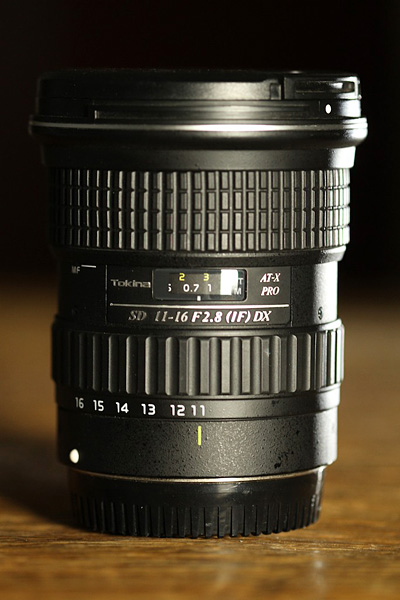
Your other option, if you’re just using your lenses for video, is to get older Contax/Zeiss or Nikon manual focus only lenses (either zooms or primes). You can now also get old manual focus Canon FD primes adapted to fit EOS cameras or other cameras like the NEX. Optically a lot of these lenses are older designs but many are still very good and it would save you a lot of money.
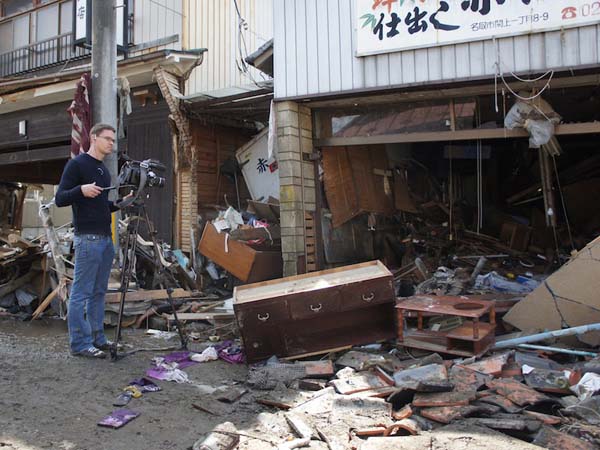
Some of the super zooms on the market will allow you to cover a huge range. For example I used the Tamron 18-270mm f3.5-f6.3 on a Sony F3 during the Japan tsunami/earthquake. It gave me a super range without me having to change lenses. I did this as a compromise for time over quality. Is it a good lens? Not really. It looked ok on the F3 although this lens is supposed to be used with the inbuilt stabilization on, so when using it on the F3, every time there was wind or lots of movement the whole picture turned to jello. I have also heard that this lens looks terrible on say a 7D.
My advice would be to stay away from this sort of lens for video work. I think these super zooms are much more suited to travel photography rather than video. For me, when I do use zoom lenses, I never tend to use them as zoom lenses anyway. When I use the Canon 70-200mm I’m normally either at 70mm or 200mm. I rarely use anything in between. So you need to ask yourself whether you will be using the zoom as a zoom or just using the two extremes of the range.
Personally, I much prefer using prime lenses over zooms. Zooms can make you very lazy. You stay in the one spot and just zoom. Using primes makes you think more about your shot and forces you to move your feet. If your feet aren’t glued to the floor you will discover new angles that maybe you would never have seen if you were using a zoom. Primes also have the added benefit of being much faster lenses. The look of, say, a f2.8 zoom lens and a f1.2 prime is completely different. Don’t get me wrong; there are some fantastic zoom lenses out there, but they just don’t have the same look as a good prime lens. Fast zoom lenses are good but fast primes are great.
Also, most lenses are optically not at their best when their apertures are wide open and tend to perform better when they are stopped down. This may be vital with stills, but I don’t think it’s as important when shooting video. Your stills lenses are designed, in the case of a full frame, to cover a huge sensor at high resolution; when you’re shooting video the image is getting reduced to a much lower 1920×1080 pixels. At this frame size the lens isn’t really getting pushed very hard. Personally I am comfortable with the quality of the results when shooting most of my lenses wide open.
People using DSLRs for video these days have in my opinion an over-fascination with shallow depth of field. You don’t need it on every shot you do. Of course, if you want super shallow depth of field then you need fast primes. Primes also, of course, offer the benefit of being in most cases very fast and therefore very good in low light conditions. I can tell the quality difference between a really good prime lens and a stills zoom quite easily. One of my favorite lenses is the Canon 50mm f1.2. It is way more expensive than the Canon 50mm f1.4 and you could buy about 20 Canon 50mm f1.8 lenses for the same money – but in my opinion it is worth every cent. For me 50mm is the lens I use the most. If you are planning on buying a really good quality lens, buy it in the focal length you use the most.
Build quality is very important to me. In most cases, the more expensive the lens, the better the build quality. The Canon L series for example are built pretty toughly. A prime example the Canon 50mm f1.2L as opposed to the Canon 50mm f1.8. Yes the Canon 50mm f1.8 only costs around $80 but if you drop it from just a few feet it will probably never work again. Good build quality also means there is less chance of moisture or dust getting into your lens.
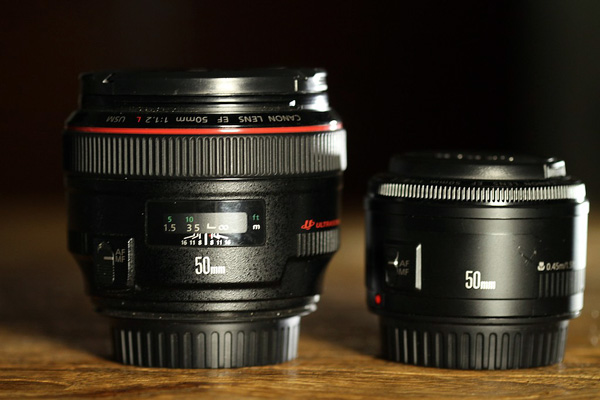
Depending on the type of work you’re doing, build quality may not be a major factor for you; for example, if you’re very careful with your equipment and don’t travel much. If you’re constantly in challenging environments and travelling a lot then you need something built to withstand the conditions. Next time you’re shopping for a lens, pick it up and feel the weight, see what it is made out of and ask yourself: “If I drop this, will it be ok?” Of course, even if you have something as solid as a Canon 50mm f1.2L, if you drop it straight down onto the front element it may not survive. One common alternative option are the Zeiss ZF and Zeiss ZE series – built like tanks with solid metal and not plastic.
Then there’s flexibility: can I use my lenses on multiple cameras and across multiple manufacturers? If you want the greatest flexibility you want to buy lenses that you can use on lots of different cameras. The problem up to this point (although people are working on it) is that if you owned say a Canon 5D and you wanted to buy a Sony FS100, but all you owned were Canon EF lenses, you couldn’t use them. If you have invested thousands of dollars in lenses you want to be able to use them on whatever the next camera is that you decide to buy.
I have a wide variety of lenses from Nikon, Canon, Tokina, Sony and Zeiss and my favorite lenses are my Zeiss ones. There is just something about the look of them. They are also extremely flexible. In a Nikon mount they offer manual focus (albeit in the opposite direction to Canon) and manual aperture control. Using inexpensive lens adaptors I can use these lenses on Nikon DSLR, a Canon DSLR, my Sony F3 and even my Sony NEX-5. Although I love my Canon L series glass I can’t currently use it on anything else (with the exception of the Sony NEX-5 without aperture control).
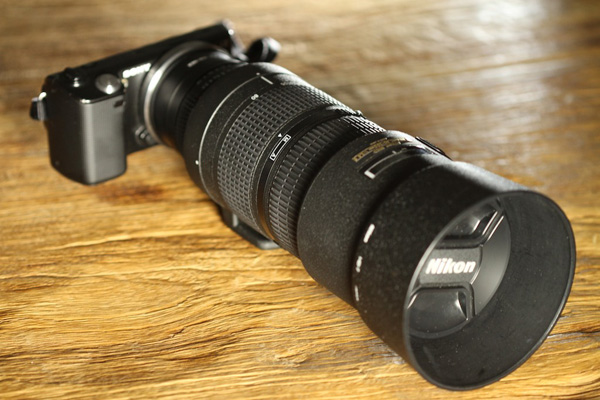
What matters is the lens that is right for you: think about what you normally shoot and how you shoot it. Factor in price, speed, f-stop, build quality and flexibility and determine what your requirements are. There is no substitute for really good glass; it can ultimately determine the quality of your finished product. Remember too that you are the artist – your camera and lens are just the palette and brush.
There are way too many lenses to cover in this post so if anyone has any questions, feel free to ask here below and I’ll be happy to help you out.
About Matthew Allard, Aljazeera Senior Field Cameraman, Kuala Lumpur:
Matt has been a Camera/Editor in TV news for more 20 years, previously working for both Channel 9 and Channel 10 in Australia. Twice Network Ten Australia’s cameraman of the year as well as being a Walkley Finalist for outstanding camerawork in 2006 (for coverage of the Cronulla Race Riots) and a Logie Finalist for outstanding news coverage 2006 (Bali 9). He is a multiple ACS (Australian Cinematographers Society) award winner. His Sword Maker story that was shot on a 7D won the prestigious Neil Davis International News Golden Tripod at the 2011 ACS Awards. He has covered news events in more than 35 countries, from major sporting events to terrorist bombings. Based out of the Kuala Lumpur broadcast centre in Malaysia he is an avid user and follower of new technology, shooting stories on HD broadcast cameras, the Sony F3 as well as new Canon DSLRs.

